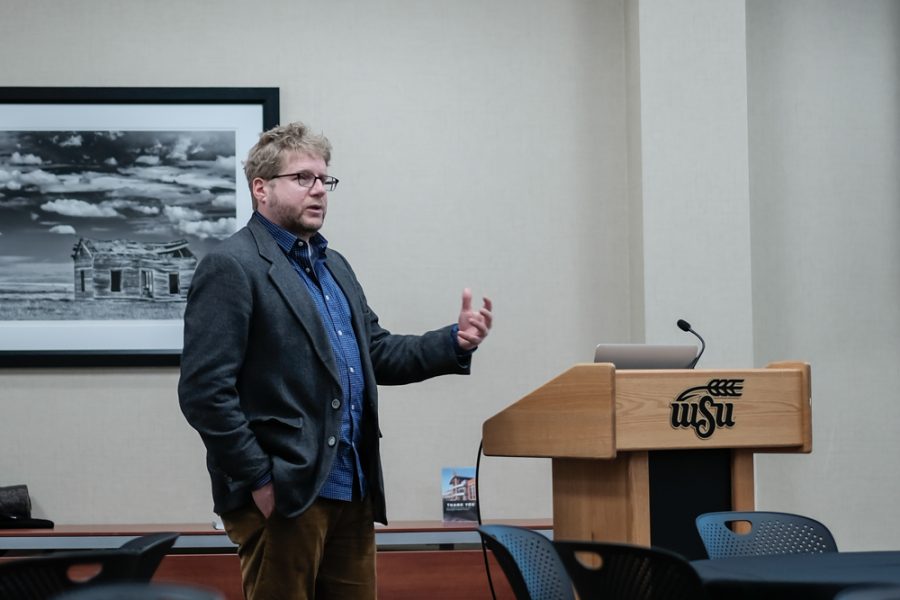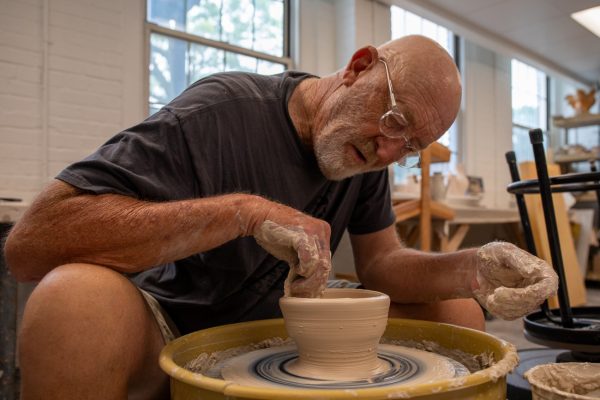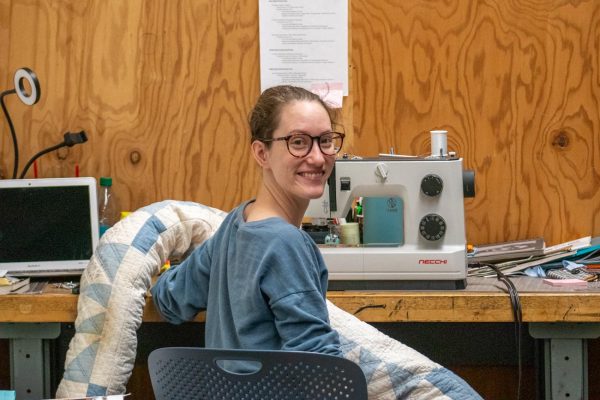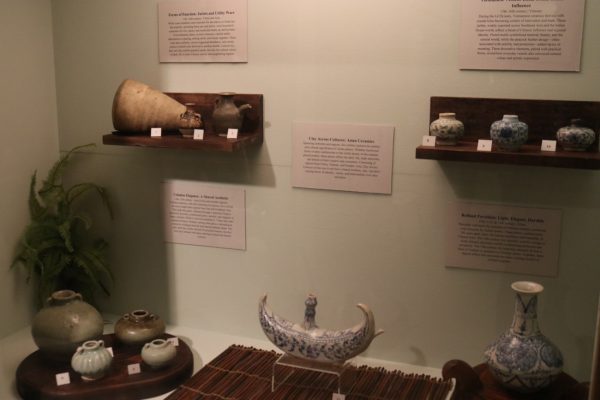‘Dine and Dialogue’ event features illustrator Josh Neufeld
Josh Neufeld talks about his book, the Influence Machine, at the event “Dine and Dialogue.”
This year’s WSU Reads book selection was “The Influencing Machine,” a graphic novel written by NPR’s Brooke Gladstone, and illustrated by Josh Neufeld. Last Wednesday, Neufeld spoke at the Dine and Dialogue event about his experience as an illustrator and working on this graphic novel.
Earlier this year, Gladstone came to campus to speak about “The Influencing Machine” and its themes—how people have received the birth of new technology with an air of suspicion, and the suspicion and villainization of the media throughout history.
Neufeld spoke about the creative process behind the book, and why comics can be a valuable tool to convey information and how they are not simply for superheroes and punch lines. During the event, Neufeld displayed photographs of his rough sketches, then he took the audience through three different steps where he added detail to each comic panel.
Neufeld was approached by Gladstone to work on “The Influencing Machine” at the perfect moment. He had just finished his project, “A.D.: New Orleans After the Deluge,” a graphic novel that chronicled the lives of five people during and after Hurricane Katrina.
At first, Neufeld was confused by the proposal to make “The Influencing Machine” into a graphic novel, but Gladstone quickly quelled his nerves.
“Brooke made me realize why comics were important for the intimacy of this book,” Neufeld said. “She asked me, ‘When a TV anchor is speaking, do you feel like they’re talking to you? Or do you feel like they are talking to a global audience?”
According to Neufeld, Gladstone wanted a book that was intimate—like Gladstone herself was taking the reader through each page and era. Neufeld took Gladstone’s vision and set about to make an Avatar of Gladstone that would be approachable for the reader.
Gladstone said he left the character’s features as basic and bare as possible so that the reader could see themselves within Gladstone’s character.
“Neither one of us could have come up with this on our own, but working together, we came up with something greater than what either one of us could have done on our own.”













